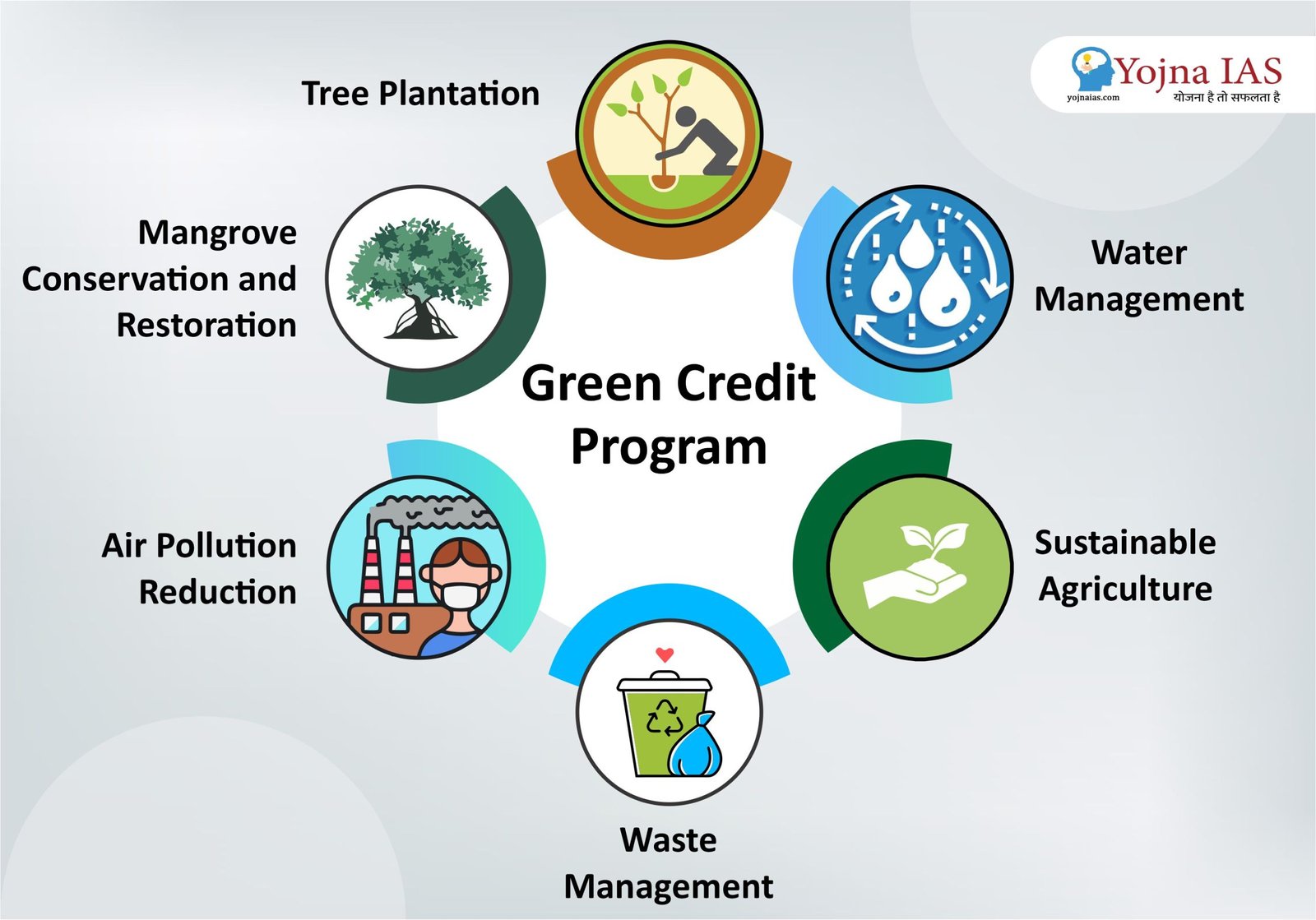17 Oct 2023 Green Credit Program
This article covers “Daily Current Affairs” and the topic details “Green Credit Program”. This topic has relevance in the “Environment and Ecology” section of the UPSC CSE exam.
For Prelims:
What is the Green Credit Program?
For Mains:
GS3: Environment and Ecology
Initiatives for conservation of environment
Why in the news?
The government has launched a unique program that enables individuals or organisations to accumulate Green Credits and trade them on a specialised exchange.
Green Credit Program
- Green Credit represents a form of incentive for activities that positively impact the environment.
- The Environment, Forest, and Climate Change Ministry is initiating a national-level Green Credit program, which utilises a competitive, market-based approach to incentivise environmental actions by various stakeholders.
- This program is a voluntary initiative as a follow-up to the ‘LiFE’ (Lifestyle for Environment) campaign.
- An inter-ministerial Steering Committee backs the GCP for its governance.
- It designates The Indian Council of Forestry Research and Education (ICFRE) as the GCP Administrator entrusted with program implementation, management, monitoring, and operations.

Program Scope:
The Green Credit program encompasses eight activities:
- Tree Plantation: Aimed at expanding the green cover across the nation.
- Water Management: Focused on promoting water conservation, harvesting, and efficient water use, including wastewater treatment and reuse.
- Sustainable Agriculture: Encouraging natural and regenerative agricultural practices, along with land restoration, to enhance productivity, soil health, and nutritional value of food produced.
- Waste Management: Promoting sustainable and improved waste management practices, encompassing collection, segregation, and environmentally sound disposal.
- Air Pollution Reduction: Encouraging measures to reduce air pollution and other pollution abatement activities.
- Mangrove Conservation and Restoration: Aimed at the mangrove ecosystems conservation and restoration.
Green Credit Procedure:
- Registration: Individuals or entities register their environmental activities on the program’s website.
- Verification: A designated agency verifies registered activities, with self-verification for small projects.
- Calculation: Green Credit calculation factors in resource needs, scale, scope, size, and relevant parameters for environmental impact.
- Certification: The Administrator issues Green Credit certificates after a positive verification.
Objectives of the Program:
- The Green Credit program operates on a market-based mechanism designed to stimulate positive environmental actions.
- It generates tradable Green Credits, which can be exchanged on a domestic market platform.
- The program encourages industries, companies, and various entities to fulfil their existing obligations under current laws.
- It also motivates these stakeholders to undertake voluntary environmental measures by generating or purchasing their Green Credits.
Distinction from Carbon Credits:
- The Green Credit program operates separately from the Carbon Credit Trading Scheme, 2023, established under the Energy Conservation Act, 2001.
- An environmental activity that generates Green Credits may also receive carbon credits under the Carbon Credit Trading Scheme. However, Green Credits obtained for fulfilling legal obligations under current laws are not tradable.
Sources: Govt launches Green Credit to incentivise eco-friendly actions
Download Yojna daily current affairs eng med 17th Oct 2023
Q1. With reference to the Green Credit Program, consider the following statements:
- It is a type of loan provided to businesses and individuals to support investments in green technologies and renewable energy projects.
- The Ministry of Environment, Forest, and Climate Change is launching a nationwide Green Credit initiative.
- The Forest Survey of India has been designated as the GCP Administrator.
Which of the statements above is/are correct?
(a) 1 and 2 only
(b) 2 and 3 only
(c) 2 only
(d) 3 only
Answer: (c)
Q2. Consider the following:
- Tree plantation
- Water management
- Monoculture type of agriculture
- Waste management
- Renewable energy plants
- Mangrove conservation and restoration.
How many of the activities mentioned above are not part of the Green Credit Program?
(a) Only one
(b) Only two
(c) Only three
(d) All Four
Answer: (b)
Q3. Explain the concept of the Green Credit Program and its significance in promoting environmentally friendly actions.


No Comments